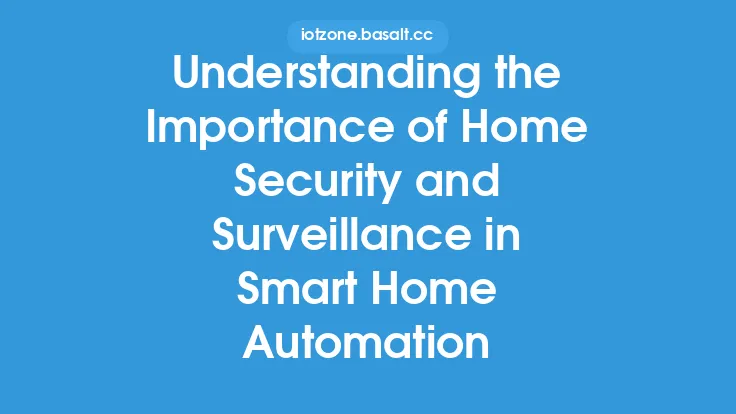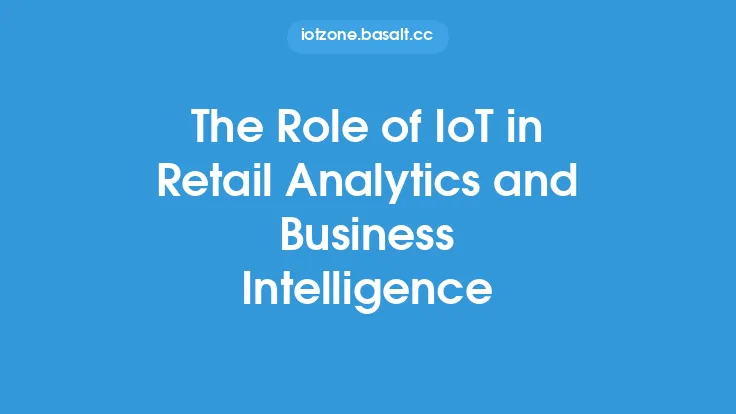The integration of artificial intelligence (AI) in home surveillance systems has revolutionized the way we approach home security. AI-powered surveillance systems can analyze video feeds, detect anomalies, and alert homeowners to potential security threats in real-time. This technology has become increasingly sophisticated, allowing for more accurate and efficient monitoring of homes and properties.
Introduction to AI-Powered Surveillance
AI-powered surveillance systems use machine learning algorithms to analyze video feeds from security cameras. These algorithms can be trained to recognize patterns, detect motion, and identify specific objects or individuals. This enables the system to differentiate between normal and suspicious activity, reducing the number of false alarms and improving the overall effectiveness of the surveillance system. AI-powered surveillance systems can also be integrated with other smart home devices, such as doorbells, locks, and lighting systems, to create a comprehensive and interconnected home security network.
Key Features of AI-Powered Surveillance Systems
AI-powered surveillance systems offer a range of features that enhance home security and surveillance. Some of the key features include:
- Object detection: AI-powered surveillance systems can detect and recognize specific objects, such as people, cars, or animals, and alert homeowners to potential security threats.
- Facial recognition: Some AI-powered surveillance systems can recognize and identify individual faces, allowing for more accurate and personalized security alerts.
- Motion detection: AI-powered surveillance systems can detect motion and alert homeowners to potential security threats, reducing the number of false alarms.
- Anomaly detection: AI-powered surveillance systems can analyze video feeds and detect anomalies, such as unusual patterns of behavior or unexpected activity.
- Real-time alerts: AI-powered surveillance systems can send real-time alerts to homeowners' smartphones or tablets, allowing for prompt response to potential security threats.
Technical Requirements for AI-Powered Surveillance
The technical requirements for AI-powered surveillance systems vary depending on the specific system and its features. However, some common technical requirements include:
- High-resolution cameras: AI-powered surveillance systems require high-resolution cameras to capture clear and detailed video feeds.
- Powerful processing: AI-powered surveillance systems require powerful processing capabilities to analyze video feeds and detect anomalies in real-time.
- Advanced software: AI-powered surveillance systems require advanced software to support machine learning algorithms and integrate with other smart home devices.
- Reliable internet connection: AI-powered surveillance systems require a reliable internet connection to send real-time alerts and stream video feeds to homeowners' devices.
Benefits of AI-Powered Surveillance
The benefits of AI-powered surveillance systems are numerous and significant. Some of the key benefits include:
- Improved accuracy: AI-powered surveillance systems can detect and recognize specific objects and individuals, reducing the number of false alarms and improving the overall accuracy of the surveillance system.
- Enhanced security: AI-powered surveillance systems can detect and alert homeowners to potential security threats in real-time, allowing for prompt response and improved home security.
- Increased convenience: AI-powered surveillance systems can be integrated with other smart home devices, allowing for a comprehensive and interconnected home security network.
- Reduced costs: AI-powered surveillance systems can reduce costs by minimizing the need for manual monitoring and reducing the number of false alarms.
Challenges and Limitations of AI-Powered Surveillance
While AI-powered surveillance systems offer numerous benefits, there are also challenges and limitations to consider. Some of the key challenges and limitations include:
- Data privacy: AI-powered surveillance systems require access to personal data, such as video feeds and facial recognition information, which raises concerns about data privacy and security.
- System complexity: AI-powered surveillance systems can be complex and difficult to install and maintain, requiring specialized technical expertise.
- Cost: AI-powered surveillance systems can be expensive, particularly for high-end systems with advanced features and capabilities.
- Dependence on technology: AI-powered surveillance systems rely on technology, such as internet connections and software updates, which can be vulnerable to outages and cyber attacks.
Future Developments in AI-Powered Surveillance
The future of AI-powered surveillance is exciting and rapidly evolving. Some of the key future developments include:
- Improved accuracy: Advances in machine learning algorithms and computer vision will continue to improve the accuracy and effectiveness of AI-powered surveillance systems.
- Increased integration: AI-powered surveillance systems will become increasingly integrated with other smart home devices, such as voice assistants and home automation systems.
- Enhanced security: AI-powered surveillance systems will continue to enhance home security, with features such as biometric authentication and advanced threat detection.
- Expanded applications: AI-powered surveillance systems will be applied to a wider range of applications, such as commercial security, public safety, and environmental monitoring.
Conclusion
AI-powered surveillance systems are revolutionizing the way we approach home security and surveillance. With their advanced features, improved accuracy, and enhanced security, these systems are becoming an essential component of smart home automation. While there are challenges and limitations to consider, the benefits of AI-powered surveillance systems are numerous and significant. As technology continues to evolve, we can expect to see even more exciting developments in AI-powered surveillance, from improved accuracy and increased integration to enhanced security and expanded applications.





